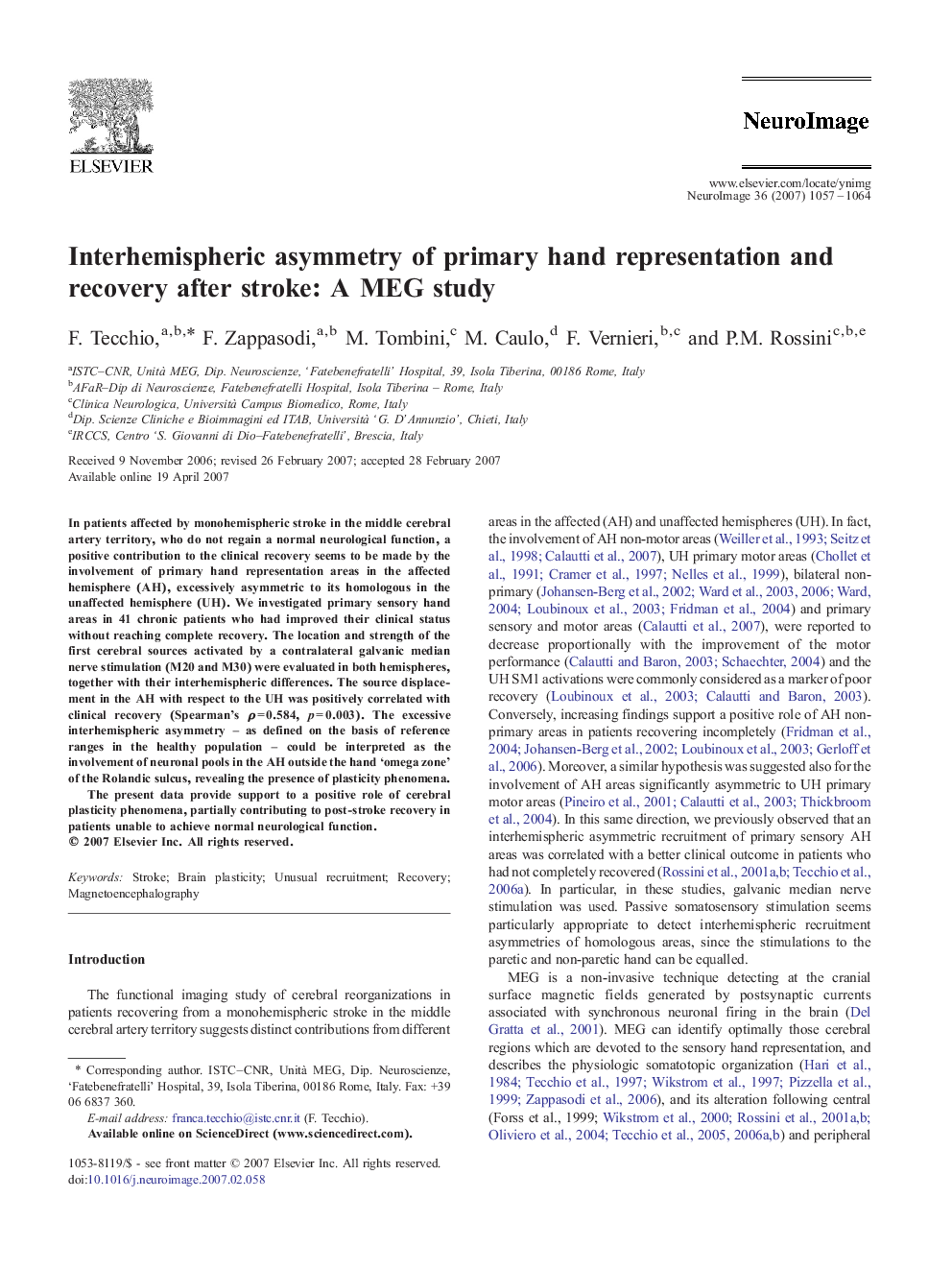| Article ID | Journal | Published Year | Pages | File Type |
|---|---|---|---|---|
| 3073607 | NeuroImage | 2007 | 8 Pages |
In patients affected by monohemispheric stroke in the middle cerebral artery territory, who do not regain a normal neurological function, a positive contribution to the clinical recovery seems to be made by the involvement of primary hand representation areas in the affected hemisphere (AH), excessively asymmetric to its homologous in the unaffected hemisphere (UH). We investigated primary sensory hand areas in 41 chronic patients who had improved their clinical status without reaching complete recovery. The location and strength of the first cerebral sources activated by a contralateral galvanic median nerve stimulation (M20 and M30) were evaluated in both hemispheres, together with their interhemispheric differences. The source displacement in the AH with respect to the UH was positively correlated with clinical recovery (Spearman’s ρ = 0.584, p = 0.003). The excessive interhemispheric asymmetry – as defined on the basis of reference ranges in the healthy population – could be interpreted as the involvement of neuronal pools in the AH outside the hand ‘omega zone’ of the Rolandic sulcus, revealing the presence of plasticity phenomena.The present data provide support to a positive role of cerebral plasticity phenomena, partially contributing to post-stroke recovery in patients unable to achieve normal neurological function.
